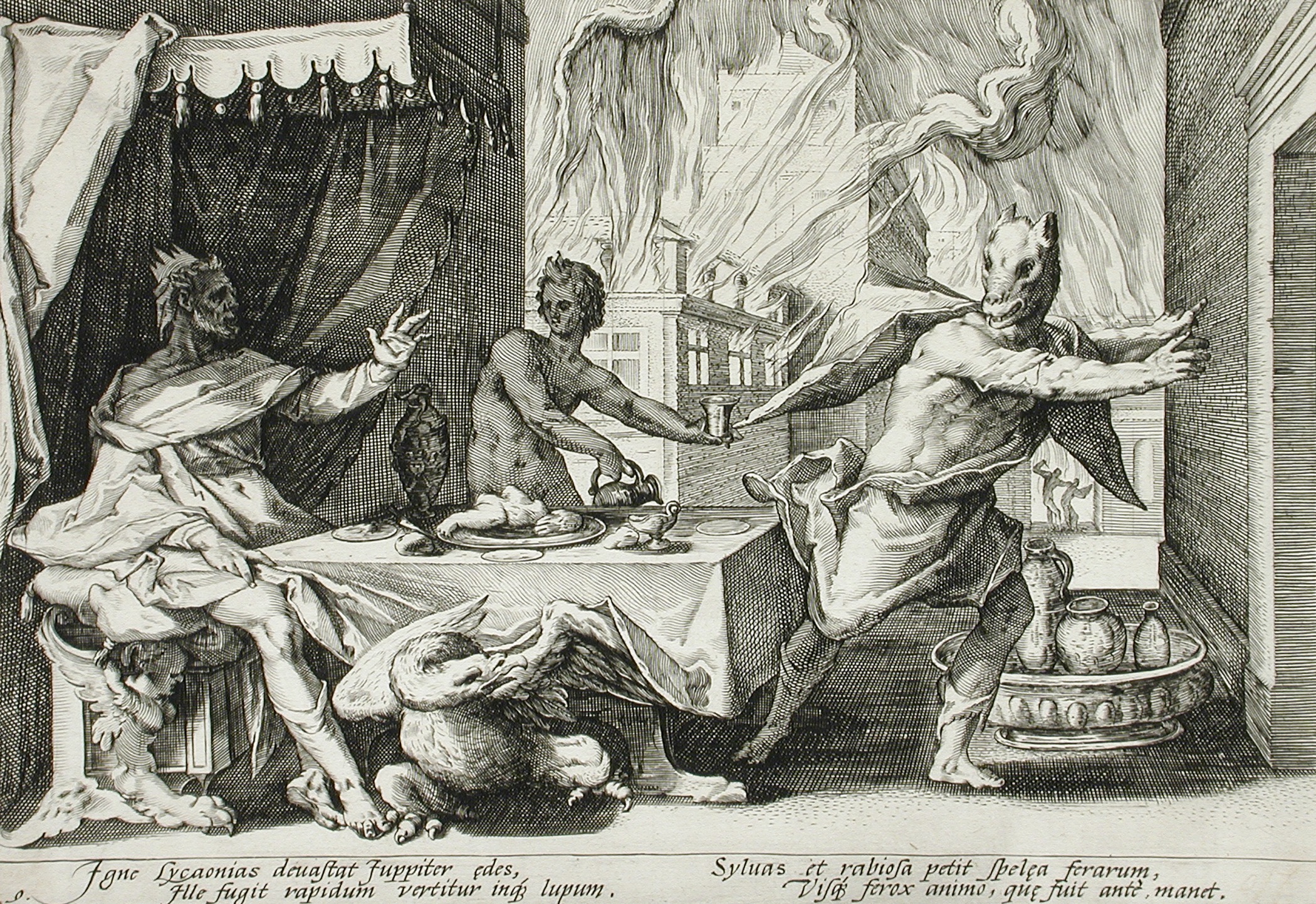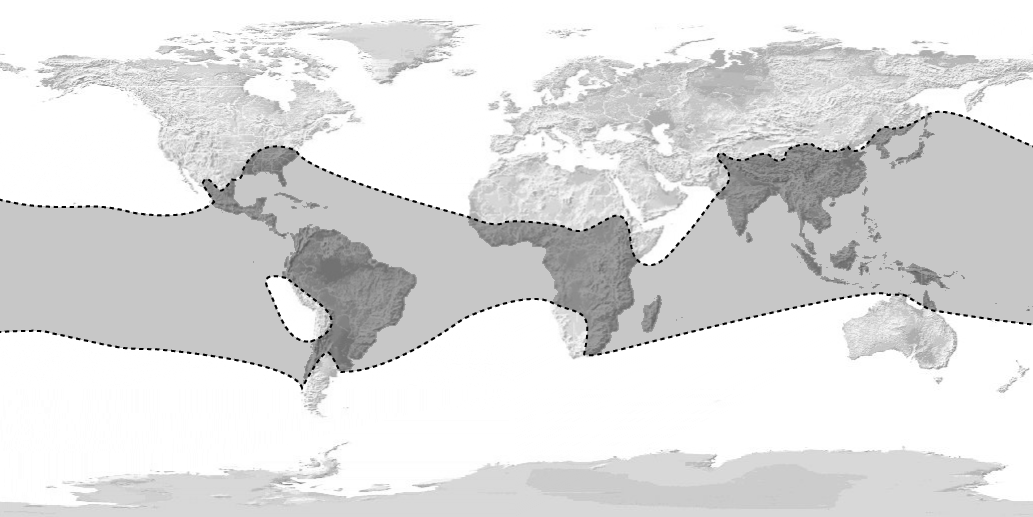|
Tikbalang
The Tikbalang (/ˈtikbaˌlaŋ/) (also Tigbalang, Tigbalan, Tikbalan, Tigbolan, or Werehorse) is a creature of Philippine folklore said to lurk in the mountains and rainforests of the Philippines. It is a tall, bony humanoid (half-human and half-horse) creature with the head and hooves of a horse and disproportionately long limbs, to the point that its knees reach above its head when it squats down. In some versions, it is a transformation of an aborted fetus sent to earth from limbo. Origins As horses weren't native to the Philippines in the pre-Spanish era, the earliest written records about the tikbalang did not specify horse or animal morphology. Documents from Spanish friars such as Juan de Plasencia's ''Customs of the Tagalogs'' (1589) describe the tikbalang as ghosts and spirits of the forests, associated with the terms ''multo'' and ''bibit''. Entries in early Spanish-Tagalog dictionaries defined ''tigbalang'' as "''fantasma de montes''" (phantoms of the mountain ... [...More Info...] [...Related Items...] OR: [Wikipedia] [Google] [Baidu] |
Philippine Folklore
Philippine mythology is rooted in the many indigenous Philippine folk religions. Philippine mythology exhibits influence from Hindu, Muslim, Buddhist, and Christian traditions. Philippine mythology includes concepts akin to those in other belief systems, such as the notions of heaven ('' kaluwalhatian'', ''kalangitan'', ''kamurawayan''), hell (''kasamaan'', ''sulad''), and the human soul (''kaluluwa'', ''kaulolan'', ''makatu'', ''ginoand kud'',...). The primary use of Philippine mythology is to explain the nature of the world, human existence, and life's mysteries. Myths include narratives of heroes, deities (''anito'', ''Diwata''), and mythological creatures. These myths were transmitted through oral tradition, handed down through generations guided by spiritual leaders or shamans, (''babaylan'', ''katalonan'', ''mumbaki'', ''baglan'', ''machanitu'', ''walian'', ''mangubat'', ''bahasa'',...), and community elders. Religion and mythology are different but connected. Bot ... [...More Info...] [...Related Items...] OR: [Wikipedia] [Google] [Baidu] |
Shapeshifting
In mythology, folklore and speculative fiction, shapeshifting is the ability to physically transform oneself through unnatural means. The idea of shapeshifting is found in the oldest forms of totemism and shamanism, as well as the oldest existent literature and Epic poetry, epic poems such as the ''Epic of Gilgamesh'' and the ''Iliad''. The concept remains a common literary device in modern fantasy, children's literature and popular culture. Examples of shapeshifters are vampires and werewolves. Folklore and mythology Popular shapeshifting creatures in folklore are werewolf, werewolves and vampires (mostly of European, Canadian, and Native American/early American origin), ichchhadhari naag (shape-shifting cobra) of India, shapeshifting fox spirits of East Asia such as the huli jing of China, the obake of Japan, the Navajo skin-walkers, and gods, goddesses and demons and demonesses such as the Norse mythology, Norse Loki or the Greek mythology, Greek Proteus. Shapeshifting to th ... [...More Info...] [...Related Items...] OR: [Wikipedia] [Google] [Baidu] |
Filipino Language
Filipino ( ; , ) is the national language of the Philippines, the main lingua franca, and one of the two official languages of the country, along with Philippine English, English. It is only a ''de facto'' and not a ''de jure'' standard language, standardized form of the Tagalog language, as spoken and written in Metro Manila, the National Capital Region, and in other urban centers of the archipelago. The Constitution of the Philippines, 1987 Constitution mandates that Filipino be further enriched and developed by the other languages of the Philippines. Filipino, like other Austronesian languages, commonly uses Verb–subject–object, verb-subject-object order, but can also use subject-verb-object order. Filipino follows the Symmetrical voice, trigger system of morphosyntactic alignment that is common among Philippine languages. It has Head-directionality parameter, head-initial directionality. It is an agglutinative language but can also display inflection. It is not a Tone ... [...More Info...] [...Related Items...] OR: [Wikipedia] [Google] [Baidu] |
Arnold Arre
Clem Arnold Lawrence Arre (born September 2, 1971) is a Filipino comic book writer, artist and self-taught animator best known for his graphic novels '' The Mythology Class'' (1999) and '' Ang Mundo ni Andong Agimat'' (2006). He was born in Metro Manila, Philippines. Biography Arnold Arre has won National Book Awards from the Manila Critics Circle for his graphic novels '' The Mythology Class'' (1999), a four-part action-adventure miniseries and '' Trip to Tagaytay'' (2000), a one-shot future fiction short story. ''The Mythology Class'', which blended ancient Philippine mythology with modern urban legends in a contemporary aesthetic, has been described as "genre-breaking", and has the distinction of being the first graphic novel to win in the Manila Critics Circle National Book Awards Comic Books category. Arre's other titles include the romantic comedy ''After Eden'' (2002), '' Ang Mundo ni Andong Agimat'' (2006), and "Martial Law Babies" (2008). Aside from his comics work, ... [...More Info...] [...Related Items...] OR: [Wikipedia] [Google] [Baidu] |
The Mythology Class
''The Mythology Class'' is a Philippine graphic novel written and illustrated by Arnold Arre. It was originally published by Arre in four issues in 1999, and was collected into a special edition by Adarna House in September 2005. The latest edition is a reprint of the special collected edition, published in November 2014 by Nautilus Comics. The original series won a Manila Critics Circle National Book Award on September 11, 2000, and is the first to win in the Comic Books category. In November 2018, Arnold Arre announced he was making a direct sequel to The Mythology Class titled, The Children of Bathala. The first volume was released a year later on its 20th anniversary. Synopsis Summoned to a secret gathering one stormy night by the mysterious Mrs. Enkanta, University of the Philippines anthropology student Nicole Lacson finds herself face to face with tikbalangs, kapres, and all sorts of engkantos— Philippine mythical creatures—she had only heard about from her grandfat ... [...More Info...] [...Related Items...] OR: [Wikipedia] [Google] [Baidu] |
Amulet
An amulet, also known as a good luck charm or phylactery, is an object believed to confer protection upon its possessor. The word "amulet" comes from the Latin word , which Pliny's ''Natural History'' describes as "an object that protects a person from trouble". Anything can function as an amulet; items commonly so used include statues, coins, drawings, plant parts, animal parts, and written words. Amulets which are said to derive their extraordinary properties and powers from magic or those which impart luck are typically part of folk religion or paganism, whereas amulets or Sacramental, sacred objects of Organized religion, formalised mainstream religion as in Christianity are believed to have no power of their own without faith in Jesus and being blessing, blessed by a clergyman, and they supposedly will also not provide any preternatural benefit to the bearer who does not have an Disposition#Religion, appropriate disposition. Talisman and amulets have interchangeable meanings. ... [...More Info...] [...Related Items...] OR: [Wikipedia] [Google] [Baidu] |
Agimat
, also known as ''anting'' or folklorized as ''anting-anting'', is a Filipino word for "amulet" or " charm"."Tagalog-English Dictionary by Leo James English, Congregation of the Most Holy Redeemer, Manila, distributed by National Book Store, 1583 pages, ''Anting-anting'' is also a Filipino system of magic and sorcery with special use of the above-mentioned talismans, amulets, and charms. Other general terms for include ''virtud'' (Virtue) and ''galing'' (Prowess). The practice is part of a wider Southeast Asian tradition of tribal jewelry, as ''gantung'' ("hanging") in Indonesian/Malay and ''anting-anting'' ("ear hanging—ornament") in Javanese, originating in the polytheistic mythology that such supernatural ornaments were worn by the gods in their ear hook or earlobes, where it is allegedly most potent. Description In the Philippine occult tradition, there is usually a corresponding agimat to deal with in a particular area in a person's life. The most frequent types ... [...More Info...] [...Related Items...] OR: [Wikipedia] [Google] [Baidu] |
Ficus Indica
''Ficus benghalensis'', ''Ficus indica'', or ''Ficus audrey'' commonly known as the banyan, banyan fig and Indian banyan, is a tree native to the Indian Subcontinent. Specimens in India are among the largest trees in the world by canopy coverage. It is also known as a " strangler fig" because like many other trees in the genus ''Ficus'' it starts out as epiphyte, that is, leaning on another tree that it ends up suffocating. Description ''Ficus benghalensis'' is an evergreen, monoecious, fast-growing tree found mainly in monsoon and rainforests, that can reach a height of up to 30 meters. It is resistant to drought and mild frost. It produces propagating aerial roots that grow downward. Once these roots reach the ground, they take root and become supportive woody trunks. The figs produced by the tree are eaten by birds such as the Indian myna. Fig seeds that have passed through the digestive system of birds are more likely to germinate than those that have not. Reproduction ... [...More Info...] [...Related Items...] OR: [Wikipedia] [Google] [Baidu] |
Sterculia
''Sterculia'' is a genus of 182 flowering plants in the mallow family, Malvaceae: subfamily Sterculioideae (previously placed in the now obsolete Sterculiaceae). Members of the genus are colloquially known as tropical chestnuts. ''Sterculia'' may be monoecious or dioecious, and its flowers unisexual or bisexual. Taxonomy Phylogeny A 27-million-year-old †''Sterculia labrusca'' leaf fossil is described from the Evros region in Western Thrace, Greece. Species Plants of the World Online includes the following accepted species: # '' Sterculia abbreviata'' E.L.Taylor ex Mondragón # '' Sterculia aberrans'' Tardieu # '' Sterculia acuminatissima'' Merr. # '' Sterculia aerisperma'' Cuatrec. #'' Sterculia africana'' ( Lour.) Fiori – Mopopaja tree # '' Sterculia albidiflora'' Ducke #'' Sterculia alexandri'' Harv. – Cape sterculia # '' Sterculia allenii'' E.L.Taylor ex Al.Rodr. & D.Santam. # '' Sterculia amazonica'' E.L.Taylor ex Mondragón # '' Sterculia ampla'' ... [...More Info...] [...Related Items...] OR: [Wikipedia] [Google] [Baidu] |
Banana
A banana is an elongated, edible fruit – botanically a berry – produced by several kinds of large treelike herbaceous flowering plants in the genus '' Musa''. In some countries, cooking bananas are called plantains, distinguishing them from dessert bananas. The fruit is variable in size, color and firmness, but is usually elongated and curved, with soft flesh rich in starch covered with a peel, which may have a variety of colors when ripe. It grows upward in clusters near the top of the plant. Almost all modern edible seedless ( parthenocarp) cultivated bananas come from two wild species – '' Musa acuminata'' and ''Musa balbisiana'', or hybrids of them. ''Musa'' species are native to tropical Indomalaya and Australia; they were probably domesticated in New Guinea. They are grown in 135 countries, primarily for their fruit, and to a lesser extent to make banana paper and textiles, while some are grown as ornamental plants. The world's largest producers of bananas ... [...More Info...] [...Related Items...] OR: [Wikipedia] [Google] [Baidu] |
Bamboo
Bamboos are a diverse group of mostly evergreen perennial plant, perennial flowering plants making up the subfamily (biology), subfamily Bambusoideae of the grass family Poaceae. Giant bamboos are the largest members of the grass family, in the case of ''Dendrocalamus sinicus'' having individual stalks (Culm (botany), culms) reaching a length of , up to in thickness and a weight of up to . The internodes of bamboos can also be of great length. ''Kinabaluchloa, Kinabaluchloa wrayi'' has internodes up to in length. and ''Arthrostylidium schomburgkii'' has internodes up to in length, exceeded in length only by Cyperus papyrus, papyrus. By contrast, the stalks of the tiny bamboo Raddiella, ''Raddiella vanessiae'' of the savannas of French Guiana measure only in length by about in width. The origin of the word "bamboo" is uncertain, but it most likely comes from the Dutch language, Dutch or Portuguese language, Portuguese language, which originally borrowed it from Malay langua ... [...More Info...] [...Related Items...] OR: [Wikipedia] [Google] [Baidu] |
Legend
A legend is a genre of folklore that consists of a narrative featuring human actions, believed or perceived to have taken place in human history. Narratives in this genre may demonstrate human values, and possess certain qualities that give the tale verisimilitude (literature), verisimilitude. Legend, for its active and passive participants, may include miracles. Legends may be transformed over time to keep them fresh and vital. Many legends operate within the realm of uncertainty, never being entirely believed by the participants, but also never being resolutely doubted. Legends are sometimes distinguished from myths in that they concern human beings as the main characters and do not necessarily have supernatural origins, and sometimes in that they have some sort of historical basis whereas myths generally do not. The Brothers Grimm defined ''legend'' as "Folklore, folktale historically grounded". A by-product of the "concern with human beings" is the long list of legendary crea ... [...More Info...] [...Related Items...] OR: [Wikipedia] [Google] [Baidu] |





